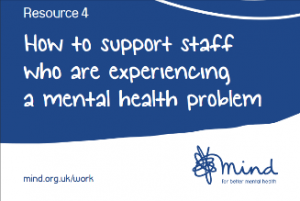As a speaker who shares her story of mental illness and recovery, I’m often asked what helped me most when I didn’t want help. What benefited me most when I was struggling and pushing people (and their assistance) away? What worked I call the “Crazy Naked Truths” (CNT).
CNT are principles healthcare providers, savvy friends, and my parents, in particular, embodied. They are strategies they utilized which facilitated my wellness journey. Eventually, I lived into these tenets– allowing me to flourish on my own.
I was learning to manage bipolar disorder, anxiety, psychosis and the aftermath of a spiritual emergency. But these pointers encourage wellness in general. They’re applicable to many situations where someone is in distress or for anyone wanting to increase their ‘contentment quotient’. The guidelines transcend condition and illness, gender, age, ethnic background, socio-economic status, sexual orientation, religious affiliation, even political persuasion. Darkness knows no bounds. Neither does light.
The 20 Crazy Naked Truths
1. You can’t get well for me. You can’t change or control my behavior, reactions or choices. You can create conditions and options to help me accept my illness and make positive choices.
2. Acceptance is my greatest liberator; denial my greatest barrier.
3. Who you are and how you show up, matter as much as what you do and how much you know.
4. Find support and skills for yourself so you have the strength to say ‘no’ to me and offer me alternatives I may not welcome.
5. Learn to set boundaries with me so I can learn to set boundaries for myself.
6. Stay calm in conversations. Practice responding rather than reacting. Before you get to your “wits’ end”, walk away. Take a time out.
7. Show me how to use my anger not lose my temper.
8. If conversations always escalate into arguments, consider family therapy.
9. Learn to empower, not enable. As consistently as you can, offer me choices that work for YOU. Incorporate your needs and wants. IE: In exchange for living with you (the parent), I (your adult child) needs to get up by 9am and do a chore everyday. If I don’t want to do that, then you can still be there to help me and explore ways to find subsidized housing.
10. Slowly, in small steps, create a reciprocal relationship with me. A relationship that is based on respecting the needs of others. Julie Fast has two excellent articles about this: The Hijacked House and Reciprocal Relationships: Parenting your Adult Child with Mental Illness While Meeting your Needs
11. Sometimes I need a kick in the butt more than a pat on the back. Sometimes, the opposite.
12. Don’t protect me from the privilege of failure.
13. You may never know which of your words created my tipping point into wellness; but know our conversations matter.
14. I will rise to your expectations.
15. Hold a vision for me until I can hold it myself.
16. Explore what helped me in the past and focus on those strengths and tools to help me in the present.
17. Help me discover what I yearn for most deeply, and you will have helped me find the intrinsic motivation I need to participate in my wellness journey.
18. Push back indicates that fear is afoot. Model and teach me tools to manage and articulate my anxiety and needs, and I will move forward.
19. Respect my timetable. It is likely different (and slower) than yours.
20. Once I’m well, support me to make ‘a good thing better’.
What do you think? In the comments section, let me know which one you’d like further information on. Who knows, it might appear as a future blog post.
© Victoria Maxwell

 Mind:
Mind:  Job Accommodation Network (JAN)
Job Accommodation Network (JAN) Not Myself Today:
Not Myself Today: 

 Hayley Peek Consulting:
Hayley Peek Consulting: Provides various free resources such as tools, training, strategies, assessments for employers, staff, managers to improve workplace mental health.
Provides various free resources such as tools, training, strategies, assessments for employers, staff, managers to improve workplace mental health. 